We’ve all been there. You start your car in the morning, and you’re greeted with a “Low Tire Pressure” warning. The car isn’t smart enough to tell you if you have a flat or the tire just needs air.
If it’s the same tire over and over, then there’s probably a puncture. If multiple tires are low, the weather is starting to get colder, and the pressure normalizes after driving to work, then it’s likely that your tires just need some extra air.
To help out, I put together this guide. I’ll walk you through the troubleshooting process, give you some important questions to ask yourself, and teach you more about how your tire works. By the end, you’ll be able to tell if your tire is flat or just needs air.
Before getting into the specifics, I want to talk about how your tire works. Each tire is made up of the same parts:
The tread. This is the textured rubber on the outer face of your tire. With a healthy tire, the tread is the only thing that comes in contact with the road. The different grooves help your tire get traction on the surface your car is driving on.
A sidewall. The sidewall is the rubber part that goes vertically on your tire. This gives your tires some added lateral strength and keeps everything together.
Plies. These are layers of different fabrics inside of your tire. When air is put into your car, it gets pressurized between these plies.
Air valve. There’s a little nub that sticks out of each tire. This is the air valve where you pump air into the tire. It has a hose that feeds into the center of your tire between plies. As you add air, you’re pressurizing the inside of your tire and expanding the rubber. This is easier to see on a bike tire which is smaller and requires less air.
The importance of this guide revolves around how important air is inside of your car tires. There’s a reason why alarms start going off when your tires have too little or too much pressure.
There’s a reason why alarms start going off when your tires have too little or too much pressure.
As I mentioned, adding air to your tires increases the pressure. When the tire is pressurized, the rubber will expand outwards. With too much pressure, there’s too much expansion and the opposite is true with too little pressure.
Tires are manufactured for their tread to sit on the road a specific way. This optimizes how much grip your tires have without ruining your fuel-efficiency or car’s performance.
Since pressure determines how the rubber sits, it also changes how the tread acts on the road. If you have way too much pressure, then your tread will have an arc to it which leads to a worsened traction.
With too little pressure, your tread falls flat and some of your sidewalls could be compromised while you drive.
The goal is to keep your tires within the golden pressure range at all times. This is the PSI value posted on your doorframe.
If your air pressure is too low or high, you might notice:
As a new driver, you might have been taught how to change a flat tire.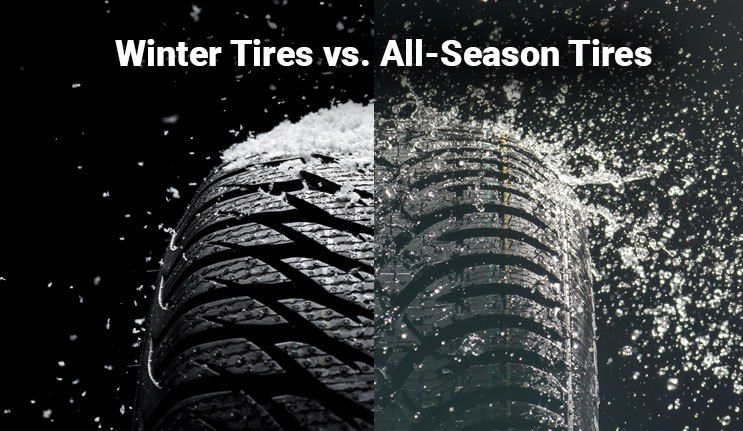 If not, check out my quick guide to learn for yourself. Either way, we all learned that tires will go flat and that’s a big problem.
If not, check out my quick guide to learn for yourself. Either way, we all learned that tires will go flat and that’s a big problem.
A flat tire occurs when something punctures your tire deep enough. If there’s a hole in one of the plies of your tire, then air will be able to escape, and pressure will be lost. Remember, the goal of these plies is to create an air-tight place for pumped-in air to live in your tires.
In general, the tread of your tires is pretty strong. A piece of gravel or hard rock probably isn’t going to puncture your tire deep enough to make it go flat.
Instead, it’s things like nails, screws, and broken glass on the road that can cause a flat tire. All it takes is a deep-enough puncture, and air will start escaping from your tire. Even a tiny hole can flatten your tire over enough time.
If you live in a state where the weather changes noticeably from season to season, you already know that your tires need to be refilled a few times each year.
This is due to the chemistry inside your tires. When temperatures rise, air particles get bigger and more energized. This raises tire pressure and causes your tires to expand. When temperatures drop, the air particles compress, lowering the tire pressure and shrinking your tires.
If you go through a few cycles of hot-to-cold temperatures, then your tires will be underpressurized and they’ll need a quick fill-up.
I just explained a little bit about a flat tire and how your tires need air sometimes. Now, let me give you some examples and questions to ask yourself to tell if your tire is flat or just needs air.
The most common reason why your tires need air is because of a change in temperature. If you want to quickly rule out a flat tire, take a look at the calendar and check the temperatures over the past week or so.
If they have been fluctuating a lot and it’s near Winter, then it could just be a matter of chemistry tanking your tire pressure.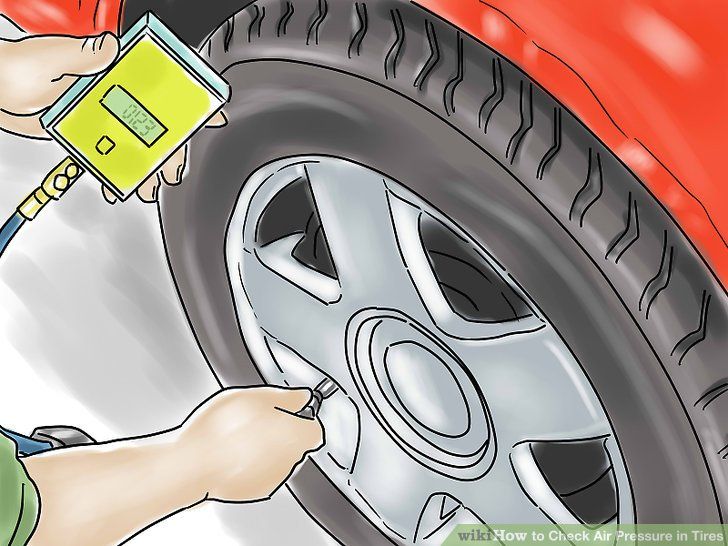
This will happen when your tires get especially cold.
If all four tires are low at the same time, there are two options: either someone really dislikes you and slashed your tires, or the cold air got to your car.
It’s very uncommon for all four tires to pop at once while driving unless you went over a spike strip or did something really bad in your car.
In cases where more than one tire is low, there’s a good chance that you can thank Mother Nature.
The way that I personally tell if a tire is flat or just needs air is to take a quick drive.
If your tire just needs air, your air pressure will go up as you drive. Driving creates friction and heats up the rubber in your tire. As it heats up, the air expands and increases the pressure in your tire. This only happens when the tire is fully sealed and doesn’t have a hole.
If your tire is punctured, then driving around will either have no change on your tire’s PSI or it will lower it even further.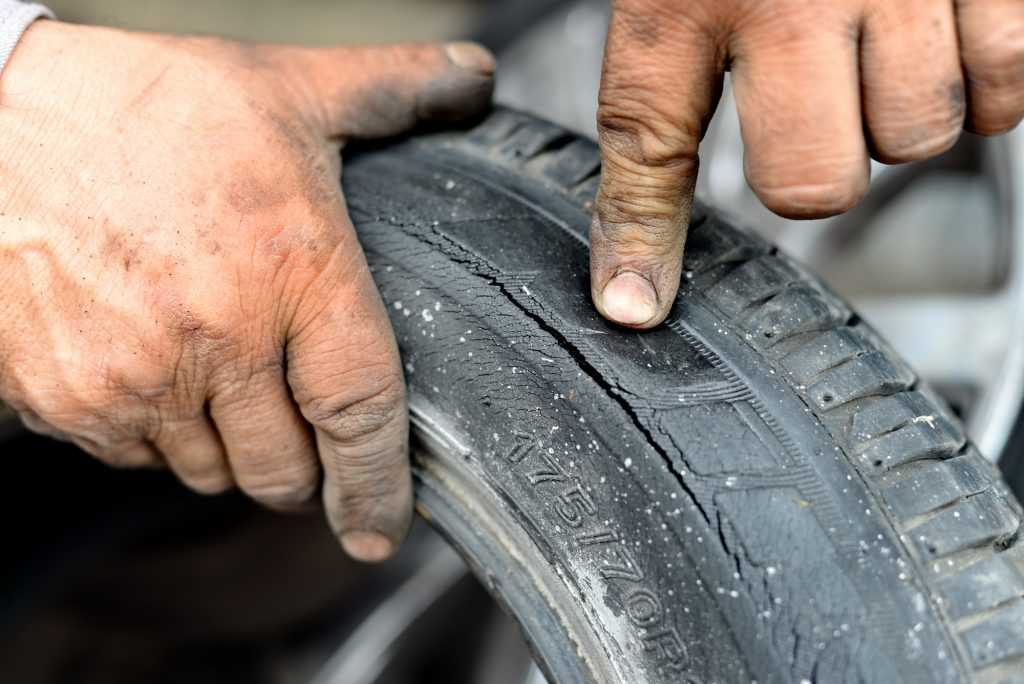 As the gas expands, it will just travel out of the puncture even faster.
As the gas expands, it will just travel out of the puncture even faster.
You’ll only be able to do this if you have a safe route to drive near your house. There’s a chance that you can get stranded if your tire is flat and the air keeps escaping, flattening your tire further — so be careful when you use this method.
Even if you don’t have a flat tire, it doesn’t hurt to add a little bit of air just to get your tire pressure up.
If you have a problem tire that you keep refilling, there’s definitely a puncture somewhere. I mentioned it earlier, but even a tiny hole in your tire will break the air-tight nature of your car and allow the PSI to drop. It might not happen in a few hours, but it could take a few days to drop your PSI again.
In this case, it’s technically a flat tire. The only difference is that the hole isn’t big enough to drop your PSI as dramatically as you’d expect. I would still suggest checking out your tire and looking for the puncture. You can either patch the hole or replace the tires.
You can either patch the hole or replace the tires.
With seasonal changes, your tires will only drop a few PSI below the manufacturer’s suggested values. For instance, you might notice that your front tire is 28 PSI and it’s supposed to be 32. Not a huge difference, but you still need to add more air.
Rhino USA Heavy Duty Tire Pressure Gauge (0-60 PSI) – Accurate, Large 2 in.
Rhino Tire Pressure Gauge (0-60 PSI)Based on some other troubleshooting, a small difference like this is likely due to just the weather.
If you look at your tire and you get a reading of 14 PSI, then there’s no way that’s related to temperature. That’s a flat tire. Whenever you have a big drop in PSI like this, then you can rule out anything but a flat tire.
The best way to tell if you have a flat tire is to take off the tire and inspect it. A flat tire has some sort of puncture somewhere.
If you don’t see a puncture, you can use the bubble test. Fill a spray bottle with water and a little dish soap. Shake up the bottle to combine them.
Fill a spray bottle with water and a little dish soap. Shake up the bottle to combine them.
Grab the spray bottle and spritz it all over your tire, focusing on the tread. If there’s an air leak, there will be a lot of bubbles in the area, and you’ll see the motion as the escaping air produces more bubbles.
What if you don’t find the puncture? It doesn’t necessarily mean that there isn’t a puncture, just that it’s so small or in an obscure place.
If you determine that the loss of pressure is due to a flat tire, don’t waste any time. If the puncture is anywhere along your tire’s sidewall, there’s a chance the tire will explode. This is called a tire blowout, and it’s devastating for your car.
AUTOWN Tire Repair Kit – 67pcs
AUTOWN Tire Repair KitAny puncture results in a loss of structural integrity in your wheel. Some hole locations are a lot worse than others, but none of them are good. Once you find out you have a puncture, drop everything and fix it.
Now you’re a tire expert. Refer back to this guide if you’re unsure if your tire is flat or just needs air. For more troubleshooting guides, refer to the rest of my blog. I also have a list of products that can help you out, so take a look.
Your subscription could not be saved. Please try again.
Welcome to Motor Hills!
Maintaining proper tire inflation is relatively simple and essential to the overall tire performance of your vehicle. A properly inflated tire will provide longer life, quicker steering response, better fuel efficiency and a smoother ride than an improperly inflated tire. Both underinflation and overinflation can cause headaches like premature treadwear and possible tire failure.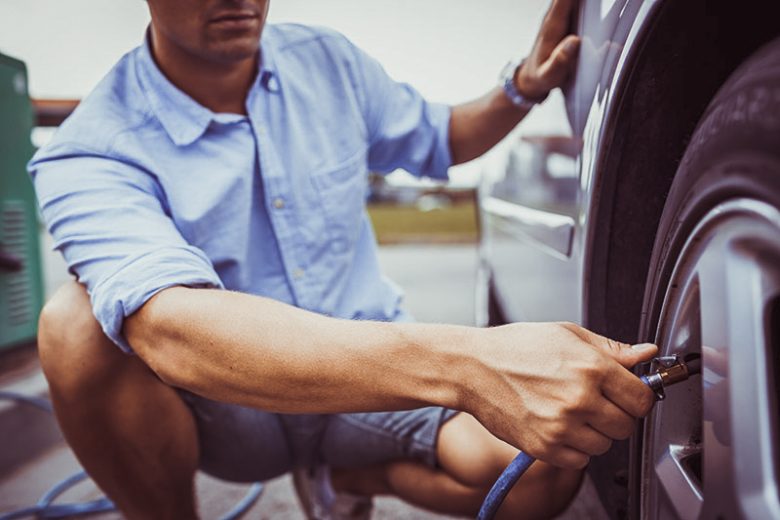 The best way to ensure you're getting the most out of your tires is to check your tire pressure on a monthly basis.
The best way to ensure you're getting the most out of your tires is to check your tire pressure on a monthly basis.
Knowing how to use a tire pressure gauge is very simple. Here’s how to check tire pressure and refill your tires.
Items You Need When Checking Tire Pressure
Tire pressure gauge
Air compressor
Pen and paper
Your tire pressure gauge can be digital or standard. Auto parts stores typically carry both. Many auto parts stores sell portable air compressors that run from your car battery or 12v power port. Alternatively, you can use the air compressor found at most gas stations. They usually cost $0.50 or $1.00 to use.
Vehicle manufacturers specify PSI – literally “pounds per square inch” of pressure – assuming tires are cold. Tires are considered cold when the vehicle has been parked for three hours or more, or if the vehicle has been driven less than a mile (1.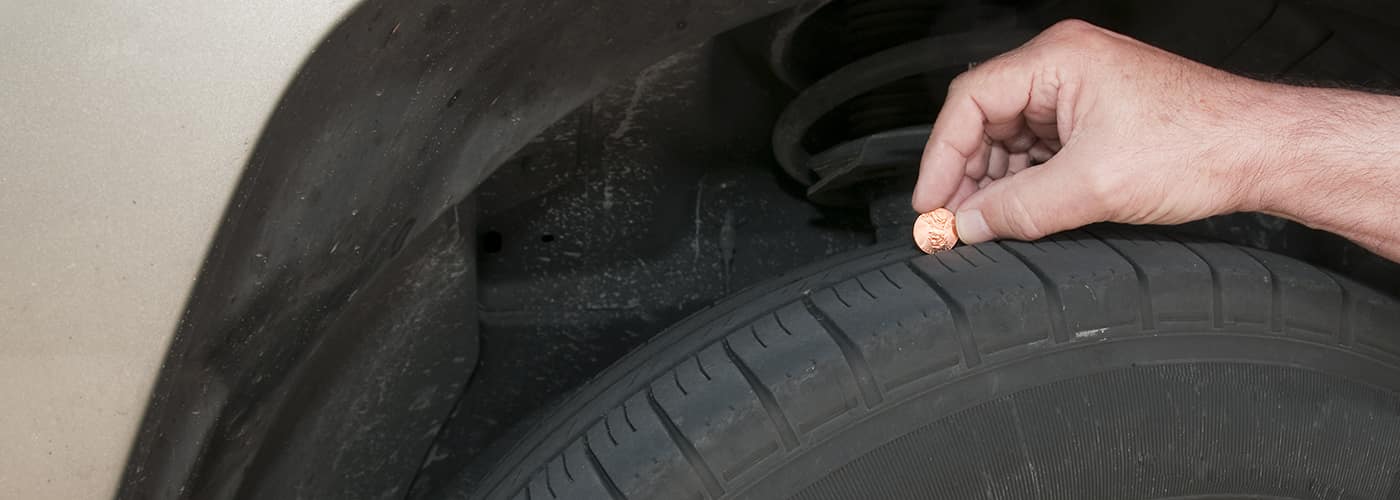 6 km) at moderate speed. PSI is the unit your pressure gauge uses to provide readings.
6 km) at moderate speed. PSI is the unit your pressure gauge uses to provide readings.
Look on the driver’s side door jamb or your owner’s manual to find the recommended cold tire PSI for your front and rear tires. If you cannot find it, you should consult your vehicle dealer, manufacturer, or a qualified tire professional.
If your front and rear tires require different pressure levels, write down the correct PSI for each to avoid getting confused as you move around your vehicle checking tire pressure.
Remove the valve cap from one of your tires. Then place the pressure gauge on the valve stem and press down hard enough so the hiss sound disappears and your gauge provides a reading. With a standard gauge, the air pressure will push a small bar out from the bottom of the gauge. Measurement units are etched into the bar. A digital gauge will show you the reading on a screen.
Write down the reading and repeat this process for all four tires.
Use an air compressor to refill any tires with low pressure. Many air compressors are different, so read directions carefully to be sure you’re using it correctly.
If you’re using the air compressor at a gas station, be sure to park so that the hose will reach all four tires. Insert change into the machine until you hear the motor running. Fill each tire by placing the end of the hose over the valve stem and pressing on the lever.
Using a gas station air compressor means your tires might be “hot.” If it is necessary to adjust inflation pressure when tires are “hot”, set their pressure to 4 psi (14 kPa) above the recommended cold inflation pressure. Recheck the inflation pressure when the tires are cold.
After filling your tires, use the gauge to check pressure again. At this point, it’s ok if you overfilled the tires because you can always let some air back out. Never drive on overinflated tires. Overinflation can result in decreased traction, premature wear, and decreased impact absorption.
Never drive on overinflated tires. Overinflation can result in decreased traction, premature wear, and decreased impact absorption.
Make the above procedure a monthly ritual. Regularly checking your tire pressure is the best way to ensure your tires never dip far below the optimal PSI.
Accuracy matters and you should keep that in mind when choosing a gauge. For just a few dollars, you can find a quality, accurate tire pressure gauge that gives accurate readings. If you’re not sure which one to purchase, ask a professional technician which he or she prefers.
A digital tire pressure gauge will provide accurate readings, but don’t forget that it operates on a battery. If you think having to replace the battery will prevent you from using it, it’s best to go with a standard gauge.
It’s best to use your personal tire gauge versus those available attached to air hoses at service stations. Of all the pressure gauges out there, they’re the most likely to be weathered, and possibly inaccurate.
Of all the pressure gauges out there, they’re the most likely to be weathered, and possibly inaccurate.
There’s never a good time for a flat. That’s why Bridgestone DriveGuard tires are masterfully engineered to keep you moving for up to 50 miles at speeds up to 50 MPH without disruption.
There’s never a good time for a flat. That’s why Bridgestone DriveGuard tires are masterfully engineered to keep you moving for up to 50 miles at speeds up to 50 MPH without disruption.
See Details Find Your Fit
Half Air Caster Wheels have an extra thick, hard soft rubber tire on an industrial plastic center and are ideal for uneven floors indoors or on grass, but should not be used on sand or gravel surfaces.
What are the advantages of pneumatic tires? One of the biggest benefits of using pneumatic tires is their ability to absorb uneven terrain. This allows for a smoother ride as well as less pushing and shaking. They are also going to have a thicker tread that provides traction for loose and uneven surfaces.
Semi-pneumatic tires are also not flat-free because they are not flat, but they do not provide bounce or cushion without flat or air tires. … an air pocket is built into these molded tires so unlike air-filled tires they don’t have tubes or valve stems and can’t be inflated.
Another disadvantage of pneumatic wheels is the increased maintenance of the need to control the air pressure. These types of wheels are easy to puncture, resulting in flats. … Because they don't need air they don't stay flat but it reduces some of the wheel damping effects.
Pneumatic, half-air and rimless wheels have air-filled, foam-filled or solid rubber tires that absorb more shock and vibration and produce less noise than standard wheels.
Pneumatic (air-filled) tires
Pneumatic tires come in two flavors: Bessloka and inner tube.
Solid tires are 100% punctual proof and therefore there is no downtime. Pneumatic tires, on the other hand, are air-filled and tubular i.e. they are provided with tube and flap, sometimes also come tubeless (i.e. without tube and flap) for high speed performance.
Most auto safety experts agree that hydroplaning is likely to occur at over thirty-five miles per hour . As soon as the first drops hit the windshield, slow down significantly.
Pneumatic rollers have rubber wheels filled with air. They are designed for low speed, manually moved applications. Pneumatic wheels provide a soft ride, shock absorption and quiet operation. Casters with pneumatic wheels are generally the best choice for outdoor use on rough surfaces (i.e. gravel) or grass.
They are designed for low speed, manually moved applications. Pneumatic wheels provide a soft ride, shock absorption and quiet operation. Casters with pneumatic wheels are generally the best choice for outdoor use on rough surfaces (i.e. gravel) or grass.
Cheel Anchiar Casters are often overlooked, but they play a vital role in wheelchair performance. These two small wheels at the front of the wheelchair can rotate in every possible direction , making it much easier to maneuver the wheelchair when getting out.
Simply choke it and use your fingers to remove the tire beads from the rim. If you see a pipe, it's not free. If you don't see the tube, plus the rest of the sealant, it's tubeless.
Pneumatic tires are similar to a car or truck tire and offer high performance and versatility. … There are two types of pneumatic tires: solid pneumatics, which are made of hard rubber and are more puncture-resistant, and air pneumatics, which are filled with air.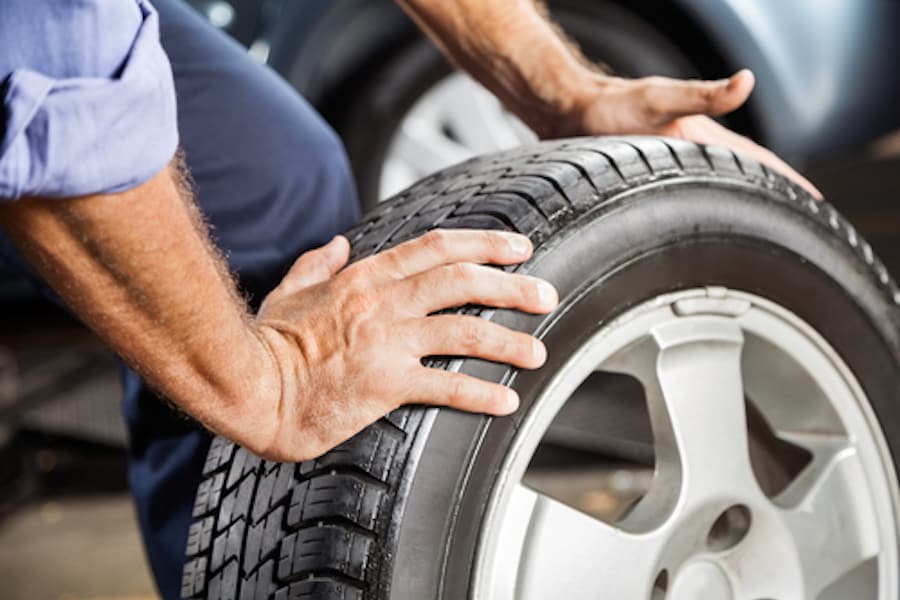
without air tires, non-pneumatic tires (NPT) , or flat tires are tires that are not supported by air pressure. They are used on some small vehicles such as lawn mowers and motorized golf carts.
Can I put pneumatic tires on a truck with a cushion? In general, the answer is no. The axle and tires are specific to the forklift frame and lifting capacity. Forklift manufacturers build forklifts to work safely with specific wheels and tires.
Most pneumatic forklift tires are filled with air. However, some are made from solid rubber wrapped around a steel strip. The hard type is designed to withstand punctures from nails and other sharp objects.
Pneumatic tires have an inner tube that you inflate like bicycle or car tires .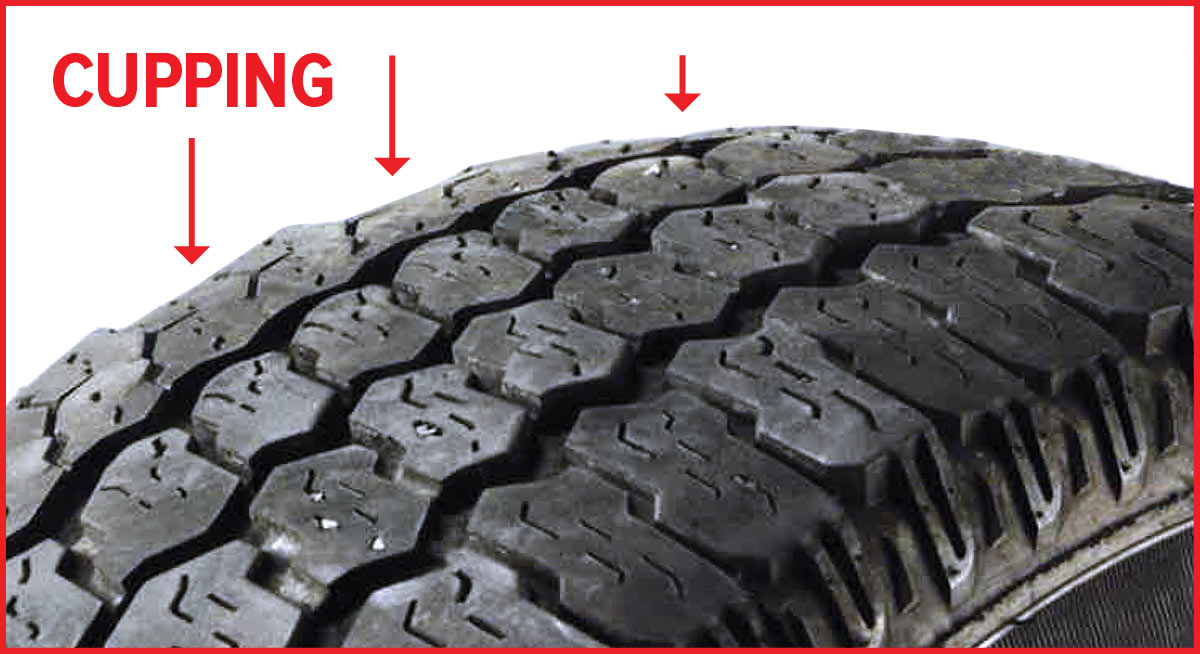 This air acts as a shock absorber, giving the Tacol a smoother ride and easier handling. But like all tires with inner tubes, the pneumatic wheelbarrow tire is prone to rough terrain and can show up.
This air acts as a shock absorber, giving the Tacol a smoother ride and easier handling. But like all tires with inner tubes, the pneumatic wheelbarrow tire is prone to rough terrain and can show up.
Long lasting air pressure retention: tubeless tires are definitely better than tube tires when it comes to handling punctures. Safer during punctures: if any object punctures the protector and inner liner, air escapes only around the nail and the valve remains intact.
You won't have to worry too much about tire explosions
However, these unexpected situations would rarely be seen on tubeless tires because the air is slowly escaping through the punctures, as stated earlier, which create much lower pressure than a quick leak. air. Tire Burst Rarely occurs, but when it does, it can explode.
Now Most vehicles are shifting towards tubeless tires due to their many benefits. This does not mean that tube tires are bad or have no benefits. This article is a great asset for you if you are interested in learning more about tubeless vs.
This does not mean that tube tires are bad or have no benefits. This article is a great asset for you if you are interested in learning more about tubeless vs.
A non-flat tire that may look like a pneumatic but is actually made of solid polyurethane and has a serrated tread. It has the same rebound and load handling as an air-filled tire, but without the necessary maintenance of re-filling air into the tire from time to time - making it non-flat.
Flate Free: Since the tires are not flat, they are completely solid and will not puncture like pneumatic tires. They are considered durable and easy to maintain; However, they don't absorb shock very well. Tires for clearcutting without flatheads are best used on smoother surfaces such as concrete patios or decks.
Product overview
Wheelbarrow tire made of solid polyurethane so it never stays flat! Puncture tire with ABS heavy rim supports up to 300 lbs.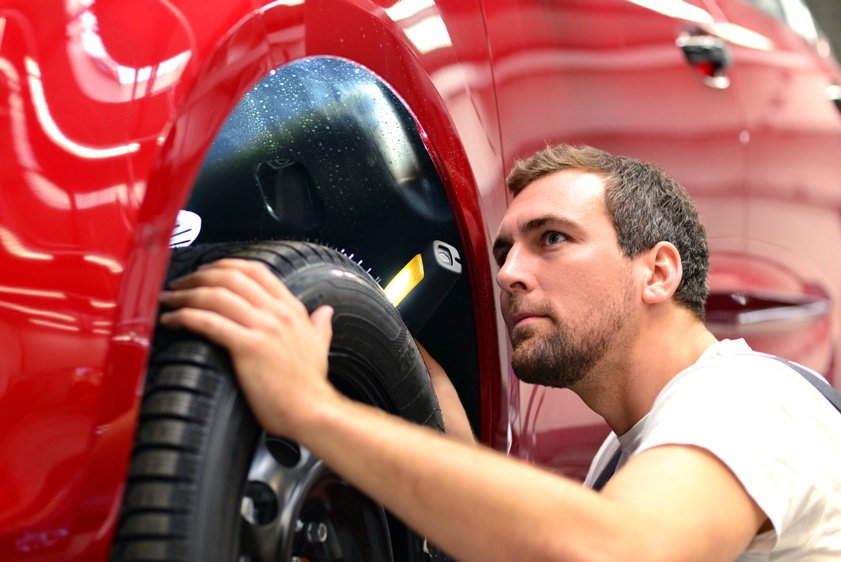 and features a round shoulder ribbed tread for a smooth ride and better control. The tire rolls easily on smooth surfaces and turf.
and features a round shoulder ribbed tread for a smooth ride and better control. The tire rolls easily on smooth surfaces and turf.
Cushion Tire Foklifts have a smaller chassis and sit much lower to the ground than pneumatic forklifts. … pneumatic tires are longer and wider than tire lifters, so they are mainly used outdoors. There are two types of pneumatic tires - solid and air. Solid pneumatic tires are made of solid rubber.
Can car tires run over glass? Yes, car tires can run into glass . Since the mid-1970s, almost all major passenger car tire brands have used steel belt technology under the rubber tread, making it extremely unlikely that the glass could puncture your tires and cause a serious blowout.
Accordingly, can glass break a tire? A: Very rarely, if ever, broken glass can puncture a steel cord radial tire or cause an explosion, but some types of broken glass can damage a tire and cause it to fail prematurely.
Next, what can puncture tires?
Punctures are the result of sharp objects, such as nails, screws or broken glass, which break through the surface of the tire. If the puncture is deep enough, the tire may begin to lose air pressure.
Are all tires with steel belts? Most passenger tires contain two or three steel belts. Some manufacturers now also wrap Kevlar cord or other materials around their belts to improve stiffness and other performance.
In this regard, how do you cut tires quietly? Cut the tire without noise
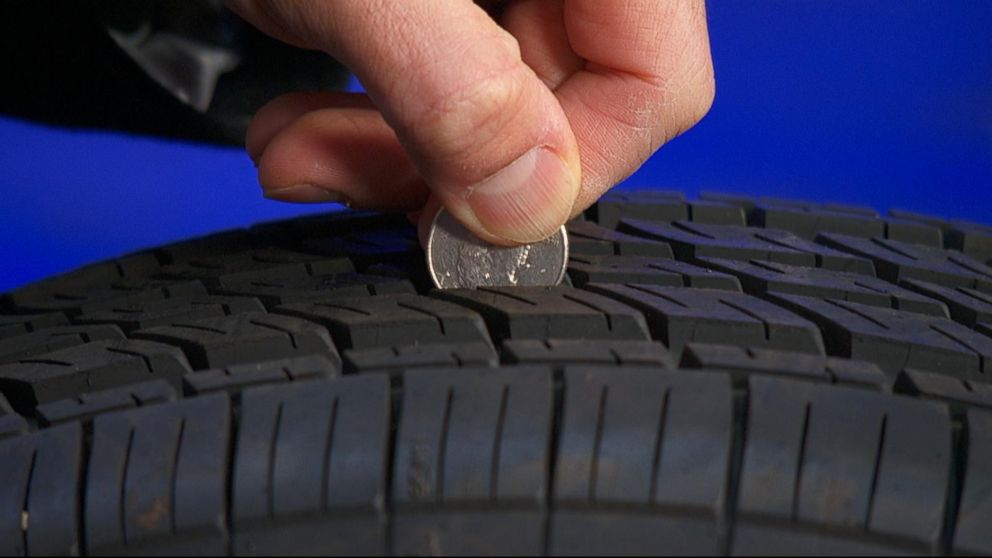
Contents
Unfortunately, there is little you can do to keep a nail, piece of metal, or glass from hitting the road and damaging your tires.
Below are six common causes of tire damage and how to prevent them.
What causes a tire to flatten overnight? Obvious causes for a flat tire in the morning include a small puncture, a faulty valve stem, a leak around the tire bead, a damaged rim, faulty repairs, and temperature fluctuations.
Car manufacturers list PSI - literally "pounds per square inch" of pressure - assuming the tires are cold.
If you feel a vibration and hear a knock, you can tell which tire it is by looking at the tire as it spins. When the belt breaks under the surface of the rubber, a hump develops as the steel bands press against the tire. Have someone stand on one side of your car.
When the belt breaks under the surface of the rubber, a hump develops as the steel bands press against the tire. Have someone stand on one side of your car.
People can get into a lot of trouble trying to prove that someone blew their tires. One of the most common problems is that there may not be any physical evidence left at the crime scene. In such cases, it can be difficult to gather enough evidence to file a police report.
Of course, we can cut off the sidewall of any tire with a sharp knife, especially a serrated and sharp one, cutting it at the seams. You can also do this with a powerful cutting tool such as a circular saw or a Dremel with a blade. So yes, you can burst a tire with a knife.
So yes, you can burst a tire with a knife.
As the name implies, "cutting a tire" means making a deep cut with a sharp instrument (usually a knife or nail) to deflate the tire. Cutting sounds can be quite loud if the tire pressure is not relieved.
The tire can be easily deflated without cutting it. Car tires have valves that control the flow of air into and out of the tire. Use an automotive valve tool or long nose pliers to twist and open the valve stem. Once the stem is removed, you will hear and feel the air coming out of the tire.
WHAT IS TIRE COOPING? The dimple of a tire may look like someone has taken an ice cream scoop and scooped out a portion of the tread every three to four inches around the circumference. Due to the shape of the worn recesses, tire recesses are sometimes also referred to as "scalloped tyres".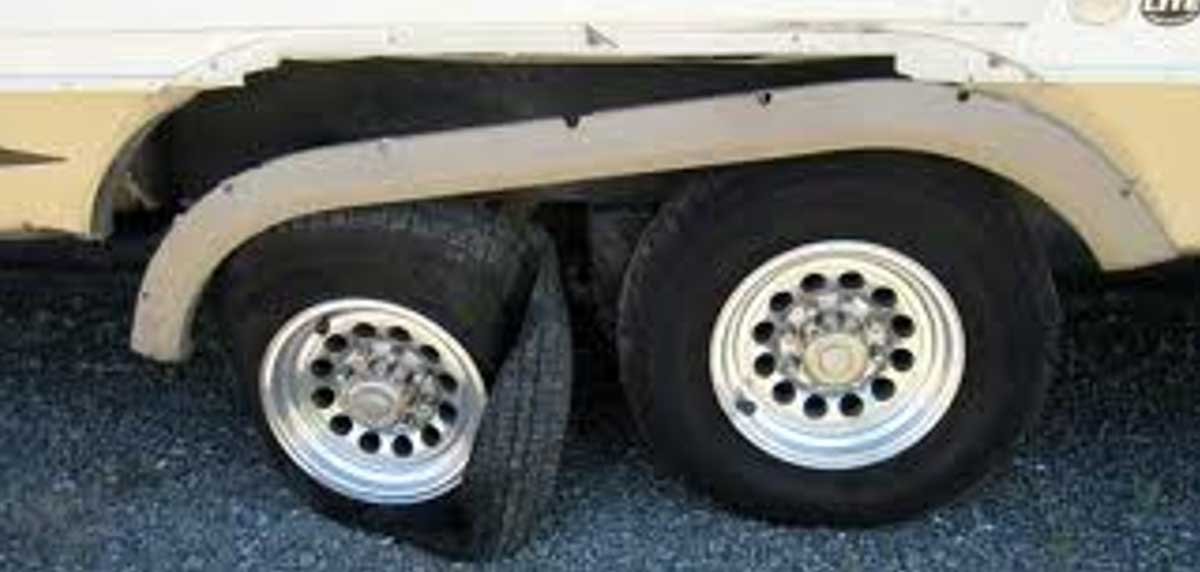
Cutting tires can also make a loud, attention-grabbing noise, so you need to be careful when doing this and you must be careful not to injure yourself. Because tire punctures are illegal in many states, you should also consider the consequences of getting caught.
Flat tires are not always caused by a hole in the rubber. Instead, the cause may be a malfunction or leak in the valve stem. The valve stem is the part of the tire that you unscrew when adding air. Any damage or even dirt on this small part can cause your tire to lose air until it is completely flat.
What are the signs of a slow tire leak?
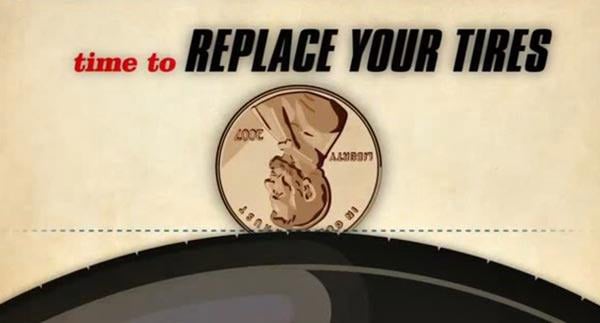
Potholes can cause serious damage to your vehicle, from a flat tire and damage to rims or hubcaps, including loss of them, to more costly damage such as breaking your wheel axle and changing your vehicle's suspension.
The truth is that tires lose pressure every day. In cool weather, a tire typically loses one or two pounds of air per month. In warm weather, tires lose even more air.
Most vehicle manufacturers recommend changing tires approximately every 7,500 miles or six months.
Hand pressure
Press the bar by hand. If the tire feels soft and brittle, the tire pressure is low. If the tire feels hard as a rock, meaning you can't put pressure on it at all, then it's overinflated. If the tire seems too low, pump some air into it while keeping your hand on it.
If the tire seems too low, pump some air into it while keeping your hand on it.
There are two common causes of tire runout: 1) the tire has come loose or 2) the wheel is bent or deformed. In any case, contact a repair shop immediately. Wobbly tires are a serious safety issue that can lead to an explosion. In order to fix the problem, you must first determine which tire is the problem.
You should NOT drive with a broken tire. Your tire(s) have the potential to be catastrophic, such as a blown tire, a flat tire, or a tire explosion. If you don't want to buy a new tire and don't have a spare, I would park your car until you get a new tire.
The tire warranty covers tire defects such as delamination, broken breaker and cracking. Cuts, holes, tears and punctures are not covered.